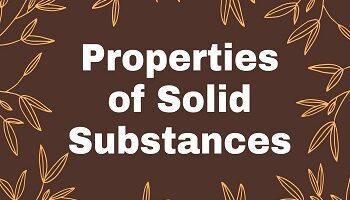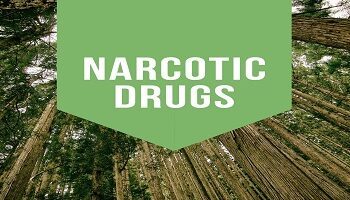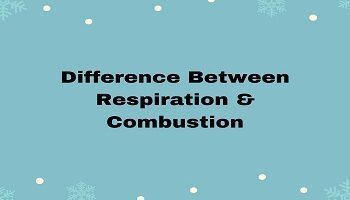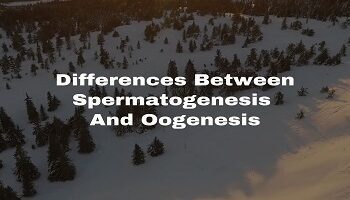Table of Contents
What is Pollination?
It is the transfer of pollen grains from the anther (or microsporophyll) to stigma (receptive regions of megasporophyll).
In other words, the transfer of pollen grains from the opened anther of the stamen to the receptive stigma of the carpel is called pollination.
Types of Pollination:
Pollination is of two types- self pollination and cross pollination.
Self Pollination:
It is the transfer of pollen grains from anthers to the stigma of same or genetically similar flower. It is possible only when anthers and stigma mature simultaneously.
Types of Self Pollination:
Self Pollination is of two types-
- Autogamy ( Same flower).
- Geitonogamy (Different flowers of the same plant).
Autogamy (Gk. Auto = self, gamos = marriage):
It is a kind of pollination in which the pollen from the anthers of a flower is transferred to the stigma of the same flower. It takes place by the following ways–
Homogamy:
Anthers and stigma of the bisexual flowers of some plants mature at the same time. They are brought close to each other by growth, bending, or folding to ensure self-pollination. This condition is called homogamy, Example– Mirabilis (Four O. clock), Catharanthus (Vinca), Potato, Sunflower, etc
Cleistogamy: (Gk. Kleisto = closed. Gamos = marriage):
The flowers remain closed so that only self-pollination occurs. In Commelina benghalensis and Arachis hypogea (Groundnut), cleistogamy is accompanied by geocarpy,i.e. formation of fruits inside the soil. In others, the cleistogamous flower remains above ground, for example– Balsam, Oxalis, Viola. In the majority of cases, flowers are chasmogamous at the beginning of the flowering season but become cleistogamous later in order to ensure fruit formation.
Bud Pollination:
Anthers and stigma of the bisexual flowers of some plants mature before the opening of the buds to ensure self-pollination. Example- Wheat, Rice, Pea, Jute, Linseed, Tomato, Tobacco, etc.
Geitonogamy (Gk, geiton = neighbour, gamos = marriage):
It is a kind of pollination in which the pollen grains from the anthers of one flower are transferred to the stigma of another flower borne on the same plant. It usually occurs in plants which show monoecious condition (unisexual, male and female flowers are borne on the same plant).
Importance of Self Pollination:
Advantages:
- It eliminates some harmful and useless recessive traits.
- There is no need for pollinating agencies.
- Flowers do not undergo modifications to attract pollinators.
- It maintains the parental characters or purity of the race indefinitely.
- Self-pollination is used to maintain pure lines for hybridization experiments.
- Plants do not produce a huge number of pollen grains, thus avoid wastage.
Disadvantages:
- Modification or new useful character for adaptation rarely develops. Thus, adaptation decreases.
- Vigour and vitality of the race decreases with prolonged self pollination.
- Disease resistance decreases.
- Prolonged selfing leads to degeneration of superiority of Variety.
Cross Pollination:
It is the transfer of pollen grains from anthers of one flower to the stigma of a genetically dissimilar flower. It is also called xenogamy (Gk. Xenos = Strange, gamos = marriage). Both xenogamy and geitonogamy are included under allogamy (gk, allos = other, gamos = marriage).
Types of Cross Pollination:
Cross pollination is of following types:
- Abiotic Agencies- Anemophily (wind) and Hydrophily (water).
- Biotic Agencies- Entomophily (insects), Chiropterophily (bats), Malacophily (snails), Ornithophily (birds).
Anemophily (Wind pollination) (Gk, anemos = wind, philein = to love):
It is a mode of pollination or transfer of pollen grains from the anther to the stigma through the agency of wind. The flowers which are wind-pollinated are called anemophilous.
Characteristics of wind pollinated flowers:
- Flowers are inconspicuous, odourless, and not showy.
- Pollen grains are produced in large quantities as a result of a lot of wastage.
- Pollen grains are small, smooth, and dry. Sometimes, they also bear winged seeds.
- Anthers are exerted and versatile.
- Gunpowder Mechanism: Anthers burst forcely and suddenly to throw the pollen grains in the air in the case of Urtica.
- The flowers are usually unisexual.
- The stigma is highly exposed and branched. They may often have a feathery stigma to easily trap airborne pollen grains.
- They are devoid of nectar and edible pollens.
- They may often have a single ovule in each ovary and numerous flowers are packed into an inflorescence.
Examples: Amaranthus, Cannabis (bhang), Chenopodium, Coconut, Datepalm, Grass, Mulberry, Poplar, Maize, etc.
Hydrophily (Water Pollination) (Gk, Hydor = water, philein = to love):
It is a mode of pollination or transfer of pollen grains from the anther to the stigma through the agency of water. It occurs in aquatic plants. Examples- Vallisneria, Lemna, Ceratophyllum, Zostera.
Characteristics of water pollinated flowers:
- Flowers are small, inconspicuous, and unwettable.
- Flowers are without nectar and odour. They may or may not have colors.
- Light and unwettable pollen grains.
- Long, sticky, and unwettable stigma.
Types of Hydrophily:
- Epihydrophily: Pollination occurs at the water level. Examples: Lemna, Vallisneria spiralis.
- Hypohydrophily: Pollination occurs inside the water. Examples: Zostera marina and Ceratophyllum.
Entomophily (insect Pollination):
It is the transfer of pollen grains of one flower to the stigma of another flower with the help of insects like moths, bees, wasp, butterfly, beetles, etc.
Characteristics of insect pollinated flowers:
- They produce nectar and fragrance.
- Flowers are bright-colored, large, and showy.
- The stigma and pollen grains are sticky.
- The exine of the pollen grains has also a viscous and a sticky substance called a pollen kit.
Examples: Rose, Jasmine, Mustard, Rafflesia (largest flower) etc.
Chiropterophily (Bat Pollination):
Pollination carried out by bats is called chiropterophily. Some of the common chiropterophilous plants are Kigelia Africana (Sausage tree), Adansonia digitata (Baobab tree), etc.
Characteristics of bat pollinated flowers:
- They produce large quantities of pollens.
- The flowers are usually large and have a strong fragrance.
- The stamens are very prominent.
- They produce abundant amount of nectar than the ornithophilous flowers.
Ornithophily (Pollination by birds) (Gk. Ornis = bird, philein = to love):
It is pollination performed by birds. Pollinating birds are having long beaks which are almost equal to the length of the corolla tube. The two most common birds for pollination are sunbirds and hummingbirds.
Sunbirds usually sit over the shoot and insert their beak, whereas, hummingbirds insert the beak during hovering over the flower.
Characteristics of birds pollinated flowers:
- Flowers produce an abundance of nectar.
- The flowers are usually bright-colored- red, yellow, orange, or blue to attract birds from long distances.
- Some bird pollinated flowers have funnel-shaped corollas.
- The floral parts are commonly feathery.
- The scent is often absent.
Examples: Erythrina (Coral tree), Agave, Bignonia, Bombax (Red silk cotton), Callistemon (Bottle Brush), etc.
Malacophily:
Pollination is carried out by molluscs, i.e., Snail. Plants that get pollinated by molluscs are Arisaema (Snake Plant or Cobra Plant), Arum lilies, etc.
Importance of Cross Pollination:
Advantages:
- It is highly useful for self-sterile and prepotent plants.
- It increases the yield as well as adaptability.
- Due to crossing over, genetic recombination takes place, thus resulting in variations.
- It provides better adaptability to offspring.
- It makes the organisms better fitted in the struggle for existence.
- The plants produced through cross-pollination are more resistant to diseases.
- Cross-pollination may bring hybrid vigour or heterosis.
- New and more useful varieties can be produced through cross-pollination.
- It eliminates defective traits and is helpful in the production of new varieties.
Disadvantages:
- It is highly wasteful because plants have to produce a large number of pollen grains and other accessory structures in order to suit the various pollinating agencies.
- For cross-pollination by any agency, a chance factor is always there.
- It is not an economical phenomenon for plants.
- Some undesirable characters may creep in the race.
- Good characters of a race can be diluted.
- Define Photosynthesis. Write down the importance of Photosynthesis
- What Are Plant Auxins? Discuss the role of Auxins (IAA) in the plant body?
- What Are Gibberellins? Discuss the functions of Gibberellins in the plant body?
- What Are Cytokinins? Discuss the functions of Cytokinins in the plant body?
- Tamil Board: Living World









Comments (No)